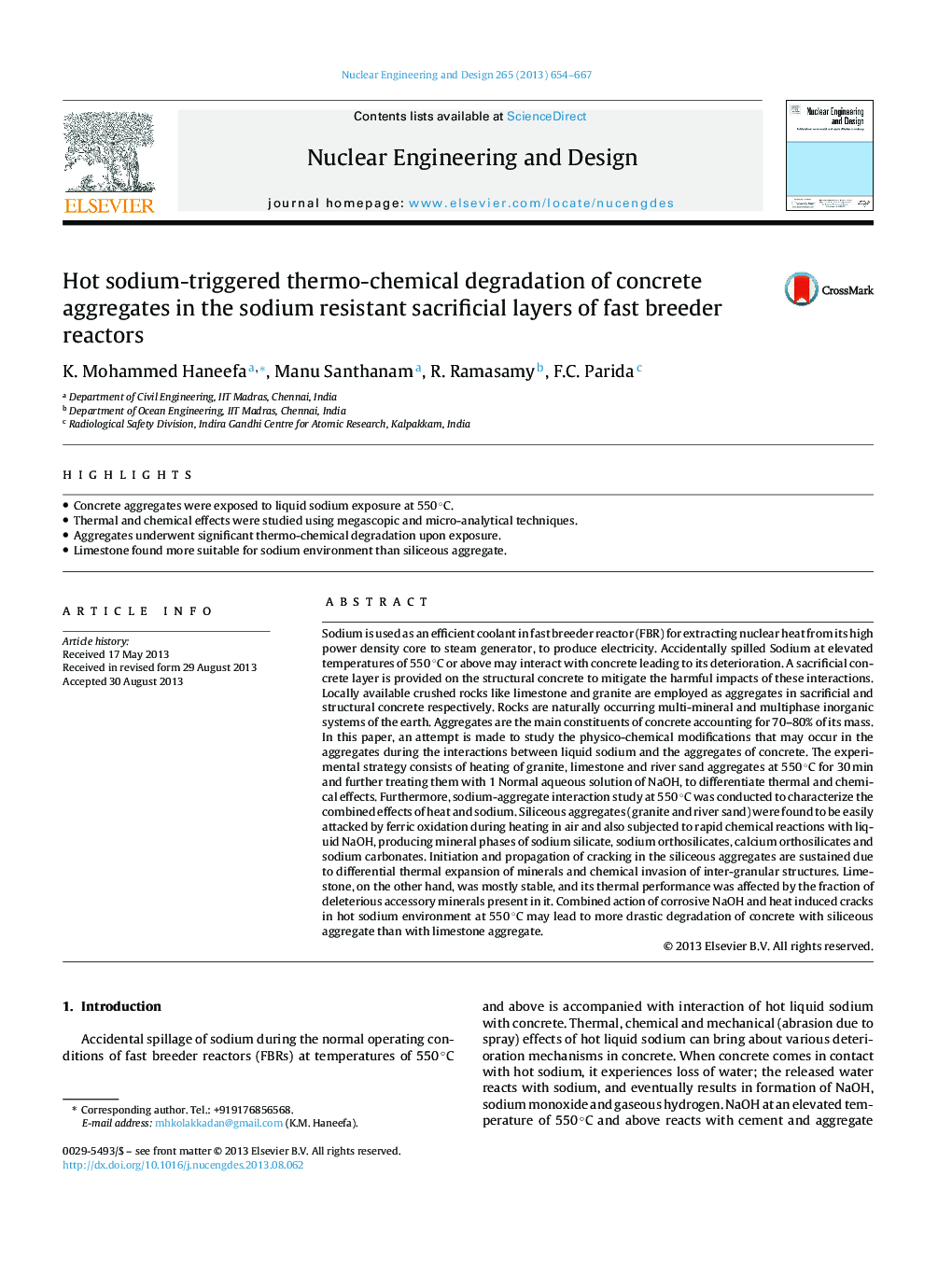| کد مقاله | کد نشریه | سال انتشار | مقاله انگلیسی | نسخه تمام متن |
|---|---|---|---|---|
| 6762733 | 511733 | 2013 | 14 صفحه PDF | دانلود رایگان |
عنوان انگلیسی مقاله ISI
Hot sodium-triggered thermo-chemical degradation of concrete aggregates in the sodium resistant sacrificial layers of fast breeder reactors
ترجمه فارسی عنوان
تندرستی گرمایی شیمیایی از سولفور سدیم در بتن های مقاوم در برابر سدیم راکتورهای پرورش سریع
دانلود مقاله + سفارش ترجمه
دانلود مقاله ISI انگلیسی
رایگان برای ایرانیان
موضوعات مرتبط
مهندسی و علوم پایه
مهندسی انرژی
مهندسی انرژی و فناوری های برق
چکیده انگلیسی
Sodium is used as an efficient coolant in fast breeder reactor (FBR) for extracting nuclear heat from its high power density core to steam generator, to produce electricity. Accidentally spilled Sodium at elevated temperatures of 550 °C or above may interact with concrete leading to its deterioration. A sacrificial concrete layer is provided on the structural concrete to mitigate the harmful impacts of these interactions. Locally available crushed rocks like limestone and granite are employed as aggregates in sacrificial and structural concrete respectively. Rocks are naturally occurring multi-mineral and multiphase inorganic systems of the earth. Aggregates are the main constituents of concrete accounting for 70-80% of its mass. In this paper, an attempt is made to study the physico-chemical modifications that may occur in the aggregates during the interactions between liquid sodium and the aggregates of concrete. The experimental strategy consists of heating of granite, limestone and river sand aggregates at 550 °C for 30 min and further treating them with 1 Normal aqueous solution of NaOH, to differentiate thermal and chemical effects. Furthermore, sodium-aggregate interaction study at 550 °C was conducted to characterize the combined effects of heat and sodium. Siliceous aggregates (granite and river sand) were found to be easily attacked by ferric oxidation during heating in air and also subjected to rapid chemical reactions with liquid NaOH, producing mineral phases of sodium silicate, sodium orthosilicates, calcium orthosilicates and sodium carbonates. Initiation and propagation of cracking in the siliceous aggregates are sustained due to differential thermal expansion of minerals and chemical invasion of inter-granular structures. Limestone, on the other hand, was mostly stable, and its thermal performance was affected by the fraction of deleterious accessory minerals present in it. Combined action of corrosive NaOH and heat induced cracks in hot sodium environment at 550 °C may lead to more drastic degradation of concrete with siliceous aggregate than with limestone aggregate.
ناشر
Database: Elsevier - ScienceDirect (ساینس دایرکت)
Journal: Nuclear Engineering and Design - Volume 265, December 2013, Pages 654-667
Journal: Nuclear Engineering and Design - Volume 265, December 2013, Pages 654-667
نویسندگان
K. Mohammed Haneefa, Manu Santhanam, R. Ramasamy, F.C. Parida,
